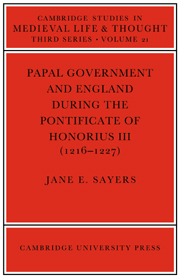Summary
THE DEVELOPMENT OF FORMS AND THE TRANSMISSION OF THE CONTENTS OF LETTERS
Letters were the vehicle of the curia's thought. They crystallized curial attitudes and aspirations and provided a bridge between general political ideas and the specific requirements of the particular institution or person. The development of forms in which the letter might be cast mirrored the growth of papal government. While parts of the letter might be very ancient in their form, others were more flexible and could be adapted or shaped to new requirements.
The method of transmitting the contents of a letter to more than one person at a time was by reading aloud. Public readings of some documents at least took place after they were acquired in order to disseminate the contents. An illumination in a Harley manuscript clearly shows Archbishop Arundel reading a sealed document, possibly a papal letter, to an assembled audience. Addresses, such as ‘To all the faithful of Christ’ and ‘To all the faithful of Christ throughout the province of Canterbury’, obviously presupposed a reading of the letter in a public place or places: how otherwise were the faithful of Christ to know of the indulgence offered? The translation of St Thomas of Canterbury from his first resting place in the crypt to the superb corona or retro-choir of his cathedral was well publicized.
- Type
- Chapter
- Information
- Publisher: Cambridge University PressPrint publication year: 1984

